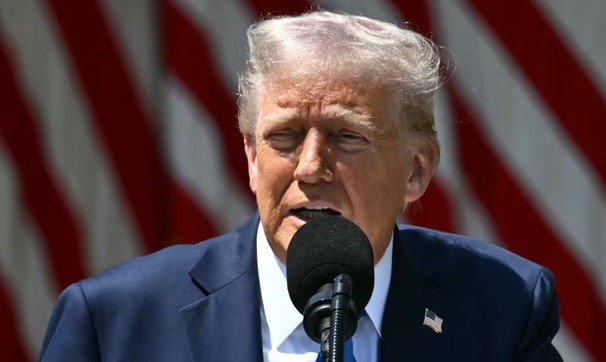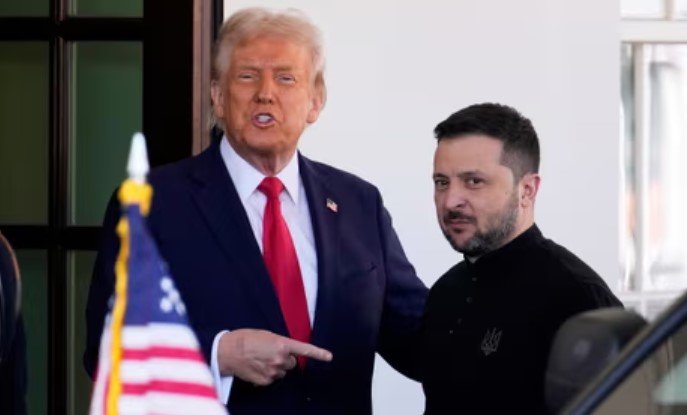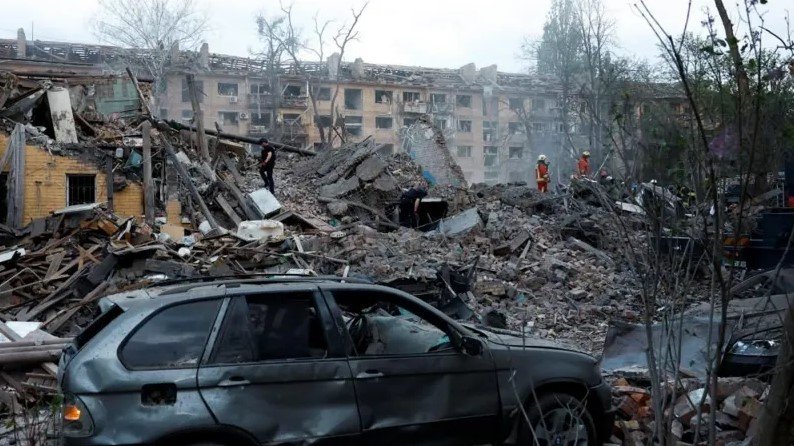U.S. plans historic arms transaction with Kyiv while conflict is heightened and places intended pressure on Russia.
Under the first official military equipment sale to Ukraine, Trump is expected to reshape the regional landscape during his second term. This movement is expected to change the defense policy of Trump’s administration toward Ukraine and reaffirm the resolve for military assistance, reinforcing the confrontation with Moscow.
The Pentagon aide disclosed that the package order will consist of missiles, drones, and radars, adding to the arsenal presented to Ukraine since the Russian assault on Crimea twelve years ago.
Tactical Turn amid Renewed Hostilities
The deal possesses immense significance. Within the preceding 90 days, artillery combat on the eastern border of Ukraine thermally intensified alongside Ukrainian intelligence reporting increased Russian troop and heavy equipment movements with reinforcements into the Donbas region. According to U.S officials, this package is expected to provide stronger soft power defense against the intended aggressors, whilst not aiding in hostile movements of provocation.
“This is about helping a sovereign nation maintain its territorial integrity and deter further aggression,” said an unnamed State Department official familiar with the matter.
What’s in the Package?
The proposed military deal, estimated to be worth over $400 million, includes:
Systems for Javelin anti-tank missiles
Reconnaissance drones capable of transmitting data in real-time
Counter-artillery radars to aid in rapid response
Secure communication equipment, along with sensors for the battlefield
Support for maintenance and training for the Ukrainian forces
The systems are listed as ‘defensive’ and are meant to aid in enabling deterrence rather than offensive operations.
Likely Congressional Approval
Despite being led by the White House, the proposed sale will still be subject to Congress notification and approval owing to the US law on foreign arms transactions. Some of the major lawmakers from either side of Congress have shown support for this. Senate Foreign Relations Committee Chair Lindsey Graham (R-SC) said, “It’s long past time we gave Ukraine the tools to hold the line.”
A Shift from Trump’s First-Term Policy
As for the U.S., during Trump’s first term, Ukraine did receive lethal aid, including Javelin missiles, but the U.S. provided military assistance with far more restraint, usually against the backdrop of Trump’s impeachment inquiry revolving around the Zelenskyy phone call in 2019.
Things have changed dramatically during Trump’s second term. Analysts claim that the former US president’s foreign policy aides are more pro-Russian hardliners, interested in reducing Chinese and Russian dominance in Europe.
Reactions from Ukraine
Ukraine received the news warmly, and President Zelensky wrote on X, saying:
“We thank the people of America and the Trump administration for being alongside Ukraine. Together, we are defending freedoms, and this support is another important sign of our partnership.”
Ukraine’s defense minister also confirmed that a delegation is on the way to Washington to finalize the training and logistical operations.

Russian Reaction: Surprise and Panic
The news of the upcoming arms sale drew an acute response from Moscow. The Russian Foreign Ministry severely criticized the US, claiming the country is “stirring up instability.” Furthermore, the Washington-based political power is said to “complicate an already precarious situation” in Eastern Europe.
“Washington keeps on blowing the region’s ‘defensive assistance’ fires,” Russian spokesperson María Zakharova said.
Media outlets that are funded by the Kremlin shared this focus, issuing warnings about the ‘red line’ that this sale has crossed, along with its ‘grave repercussions’ for the region.
European Allies Respond Tactically
NATO allies have leaned towards neutral support. The United Kingdom and Poland showed support, unlike Germany and France, which showed resistance. “We are supporters of the self-defense actions of Ukraine, but we would encourage all sides to tone down tension-increasing moves,” came a statement from the EU Council.
Simultaneously, applauding the sale were the Baltic states, who is of the opinion that Russia is an Zbigniew Brzezinski talked about Mackinder’s soft underbelly for NATO’s existential threat, Estonia’s PM stated: “This is what every nation standing sentinel for democracy at the gates of Russia hopes due to US leadership.”
Military Specialists Discuss Its Implications
Defense experts consider the agreement as practical as it is deep-seated symbolically.
Speaking as the Atlantic Security Council’s Anne Sorensen, “This gear may not help Ukraine to mount offensives, but it certainly raises the price for any fresh Russian invasion by NATO considerably.”
Another analyst, retired Lt. Gen. Marcus Yale, said, “For Washington, this is sending a political message and a modest signal of support to Kyiv more than it is about actually escalating military assistance.”
Internal Politics and the 2026 Election
Some say there is a partisan explanation for the timing of the announcement as well. The Trump Administration, which began its second term a few months ago, came under fire recently for being NATO’s and America’s international alliances’ disengaged partner. The arms deal pushes back on that narrative while giving a deal to Ukraine.
“This brings Trump’s NATO critique to the forefront while still keeping U.S. interests abroad protected, helping Trump appear strong, not weak,” remarked Brookings’ Raymond Todd.
The White House might be looking to appease hardline conservatives and independent voters with a strong national security stance ahead of the midterms.
A New Chapter of Relations with Ukraine?
The military sale could signal the start of a more defined bilateral U.S.-Ukrainian security cooperation. There are unconfirmed reports of a commander’s program, a preliminary protocol for sharing military secrets, and even the periodic placement of U.S. military advisors in western Ukraine on a rotation basis.
Although no formal agreement has been signed, the present trajectory suggests a semi-permanent defense partnership that could counterbalance Russian influence in Eastern Europe.
Table of Contents
Final Thoughts
The Trump administration’s unveiling of the first military sale to Ukraine is noteworthy for more than transactionally orchestrating an arms deal; it is a strategic proclamation. With Russia increasingly asserting its presence in the post-Soviet space and NATO facing fresh obstacles, Washington seems more committed than ever to support Kyiv, this time overtly.
Whether these actions create peace through deterrence or heightened confrontation remains to be determined. What is certain is the shifting balance of power in the region, which is now the focus of both adversaries and allies.



